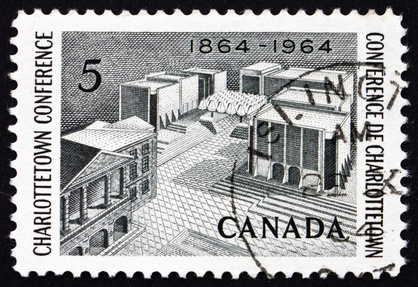The British imperial system worked this way; the merchants supplied the mother country with fur or timber and this was to be used with regard to manufacturing by the mother country. They therefore depended on the east-west trade agreements of the imperial system.
However the repeal of the corn laws in the 1840’s led to the relinquishment of loyalty to Britain of much of the merchant class. Their interest now lay with the empire to the south(Laxor,p30-31).
It is interesting to note that the manufacturing belt developed around this time in the Ohio Valley and around the south shores of the Lake Erie and Ontario shoreline. This was through the onset of canals and railway lines and a new hoist system for loading and unloading made the area a great iron and steel industry. This technology moved north to southern Ontario making north-south trade routes more important.
Reciprocity as well created much north-south exchange between 1854 and 1864. Canadian goods would go to the United States and manufactured goods would come up into Canada.
However the civil war changed the emphasis of the direction of trade flow. This was due to the hostility that was shown by the U.S. toward Britain, for aiding the Confederacy. Therefore Reciprocity was stopped and their were fears that the newly victorious Union was going to invade the British colonies. Therefore confederation became popular and happened on July 1st 1867(Laxor,p30).
The National Policy of MacDonald’s government in the late 1870’s again established a stronger east-west agreement and probably is responsible for Canada’s very existence today. The policy built a railway from eastern Canada to B.C. It encouraged immigration out west and it forced farmers out west by tariff to buy Canadian manufactured farm equipment. However the tariff was not as protective from north-south trade influences as one might think (Laxor p.30-31).
This is because it didn’t care about protecting native Canadian industry but only making sure American companies would have to build their branch plants in Canada, before they could sell to the Canadian Market.
The end of WWI had destroyed Britain’s position as a capital exporter, along with Europe being very much less influenced with the purchase of Canadian wheat. The east-west wheat and transportation market seemed to be hurt.
In the 1930’s the depression almost destroyed the Canadian wheat industry. As a result a north-south mineral extraction market bound for the U.S. became more prominent as did increased American investment.
After WWII the economies of both countries became more interlocked with greater amount of greater amounts of branch plants in Canada. Also mineral extraction by American owned companies began to become incremental. This was fine until the mid 1960’s when the U.S. economy began to decline and show to much competition from countries like Japan and Germany. Canada was being used as a safety valve with it’s branch plant economy, to lessen the effect of American shutdown.
